Tuberous begonias belong to the Begonia family and are a complex hybrid created by breeders from different types of begonias.
More than 1,000 plant species are included in the begonia family. And there are already more than 12 thousand varieties and hybrids of begonias. For the convenience of flower growers, cultural begonias were divided into 3 groups, namely: bush begonia, with decorative leaves and with decorative flowers.
The latter group is very numerous and even includes species that bloom only in autumn or winter. Those varieties are very popular, the flowering of which is in double inflorescences or in simple flowers continuously (all year round). There are also such varieties, the flowers of which are extremely small in size and there are a lot of them. And then there are varieties that have very large double flowers that are similar to roses.
Content
Planting tuberous begonia at home
Buying begonia tuber
As a rule, growers buy or receive a specimen of begonia in the form of a tuber (or part of a tuber).
If you buy the tuber yourself, take note of how it looks. Its size must be at least 3 cm in diameter. The main thing is that the tubers are dense (not overdried) and smooth, without suspicious dots and damage.
The tuber has a top and a bottom, sometimes it is difficult to distinguish between them. On the upper part there are bumps and irregularities - these are the buds, growth points. The top of the tuber is more concave or flat, and the bottom is convex. Very large tubers can even be cut into 2-4 pieces with a knife. The main thing is that each one has at least 3 buds - growth points.
Priming
Tuberous begonias prefer loose and nutritious soil with a neutral acid reaction. Adult tubers can be planted in this mixture: peat (1 part), sand (1 part), deciduous soil (3 parts). It is also permissible to add 1 part of rotted cow dung.
It is advisable to plant the Begonia tuber in a pot in February-March. And in open ground - not earlier than May-June. The soil should already be warming up well. Planting tuberous begonia in spring.
You can germinate the tuber before planting in open ground, like seedlings, and then the sprouts should be carefully transplanted into flower beds, placing them at a distance of 30-35 cm from each other. Pot For Tuberous Begonia, choose a medium-sized pot, not too wide and not too deep. The main thing is to check how much the tuber fits in the container.From the top of the tuber to the edge of the pot should be 3-4 cm.
Planting tuberous begonia
We clean the tubers from dead roots. In order to disinfect the plant, the tuber should be treated with a fungicide (at least a weak solution of potassium permanganate). Soak for 30 minutes.
We fill the pot by 1/3 with expanded clay or other drainage. Then we fill the pot with the substrate. We make a depression in which we place the tuber (with growth points upwards). Try to place the begonia tuber neatly. Then you need to sprinkle it on top so as to leave the buds open.
Later, when the young sprouts of tuberous Begonia reach a size of 4-5 cm, it will be necessary to add more substrate and cover the tuber.
Tuberous begonia care at home
Temperature regime
For those species that bloom in winter, the best ambient temperature will be 13-21 degrees. However, in the case when the tubers of a flower in winter are in a state of complete dormancy, and its stems die off, the flower should be protected from frost.
Humidity
The begonias have no particular preferences regarding air humidity. However, this plant still feels much better when it is tall.
Lighting features
This flower loves bright light, but it should be borne in mind that direct sunlight can harm it. In this regard, it should be absolutely protected from them. Those species that bloom in winter need a lot of light during the period when buds are formed and flowering begins.
How to water properly
Abundant watering is needed for this plant throughout the entire flowering period. And when it ends, watering is necessary only when necessary, but you should know that drying out of the earthy coma should not be allowed in any case.
It is necessary to gradually reduce the amount of watering for those plants that are dormant in winter, but only after their leaves begin to turn yellow. Begonia must be watered correctly. The fact is that if you dry out the earthen lump or, on the contrary, overfill the plant, this will have an extremely negative effect on its condition.
Feeding a flower with a weak solution of a mineral or specialized fertilizer should be done during budding and flowering.
Breeding features
Tuberous begonias can be propagated by various methods. So, in springtime, you can try to grow a new flower from a cutting, and also divide the tubers of an old plant. Well, there are also varieties that are grown from seeds. Those species that bloom in winter can be propagated by cuttings of leaves or tops of stems.
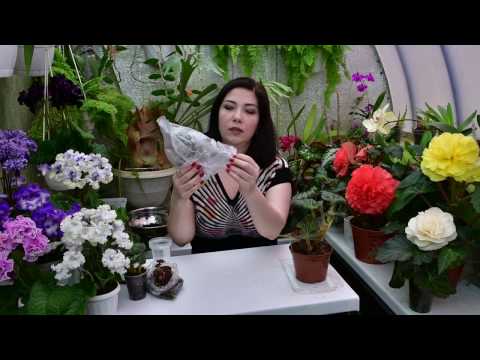

Watch this video on YouTube
Transfer
When transplanting this flower, it should be borne in mind that when watering, the water should not stagnate in the pot, therefore, very good drainage is needed. Experienced gardeners recommend pouring charcoal on top of the drainage layer - this will help to avoid decay. And then the pot is filled with soil. When planting, it should be borne in mind that the tuber should be located almost on the surface and be only slightly dusted with soil.
Diseases
If you notice that the plant is affected by some kind of disease, then you must act immediately. First, a sick begonia should be removed away from healthy flowers, in a well-ventilated room. And secondly, it must be treated with the necessary drug.
Bloom
In the case when large-flowered tuberous begonia grows in a pot in a house, then small flowers (female), growing near large (male) ones, must be cut out. Faded flowers must also be removed. This can only be avoided if the begonia belongs to a variety with small flowers.
Growing difficulties and reasons
While growing begonias, some difficulties can arise. For instance:
- Yellowing leaves... This can be due to the fact that the plant does not have enough light. Also, such a nuisance can arise with too abundant or insufficient watering.
- The tips of the leaves turned brown... Indoor air is too dry.
- The leaves are dim and there is rot... The reason is excessive watering, the land is oversaturated with moisture.
- Falling buds... Too abundant watering or the air in the room is very dry.
- Leaves fall... Most likely, the plant lacks light, while its stems will be quite thin with a few leaves. If the room temperature is high, the leaves will become crooked and dry. And their rotting and wilting may also begin when there is an excessive amount of moisture in the soil.
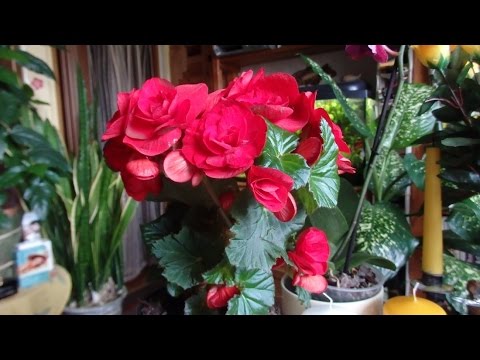

Watch this video on YouTube

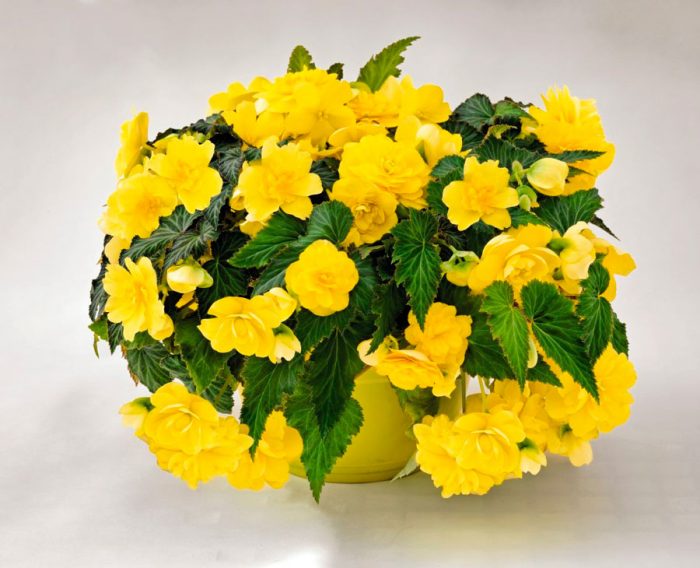
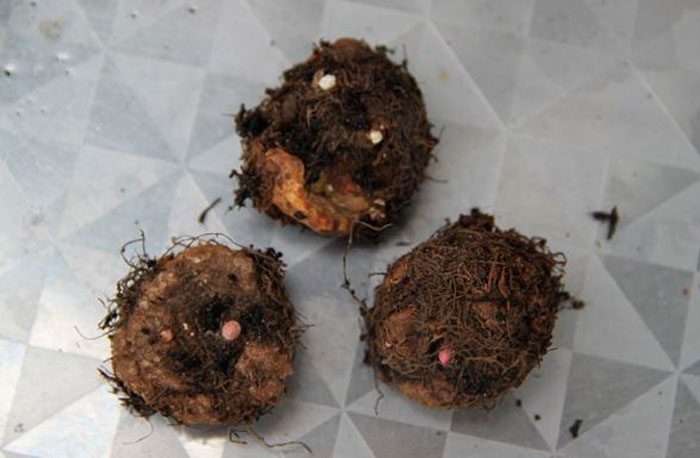
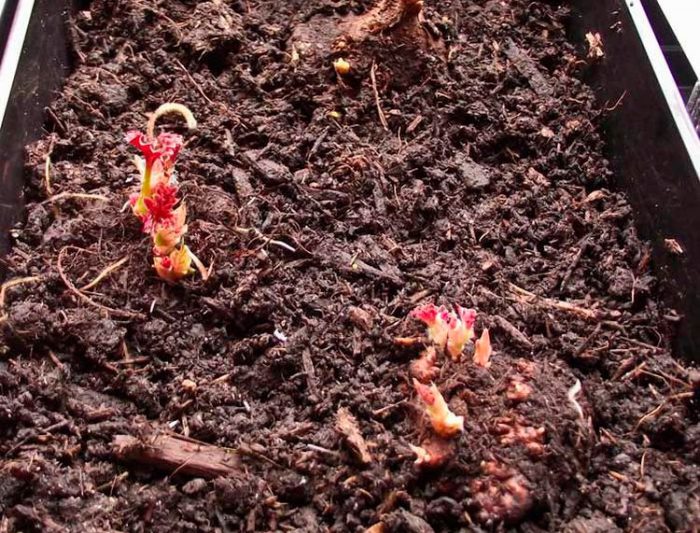
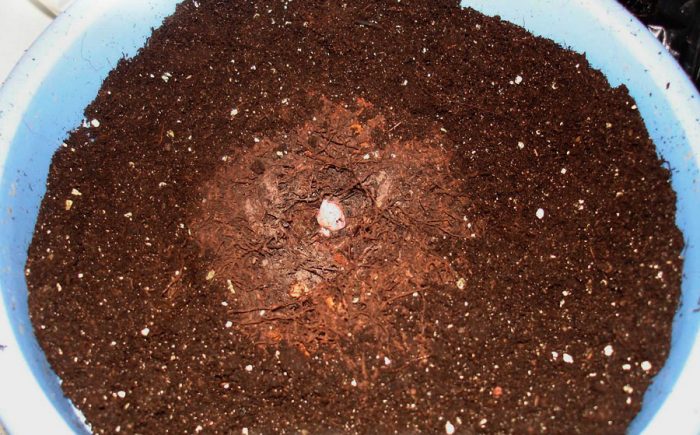
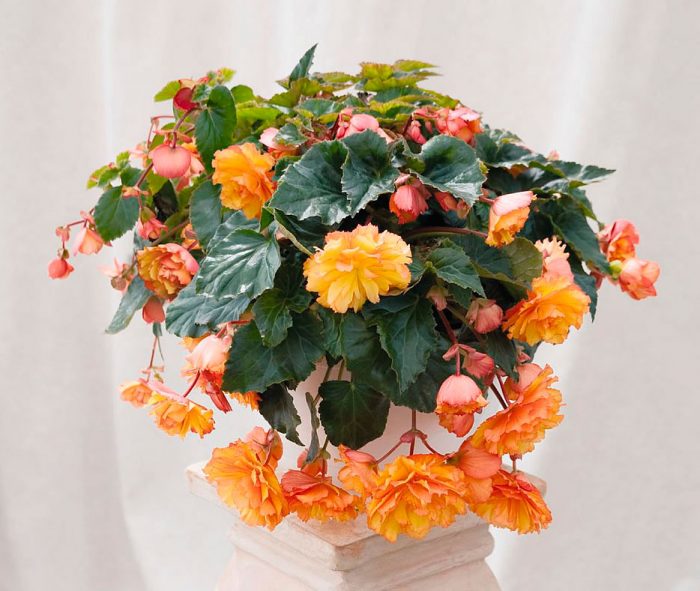
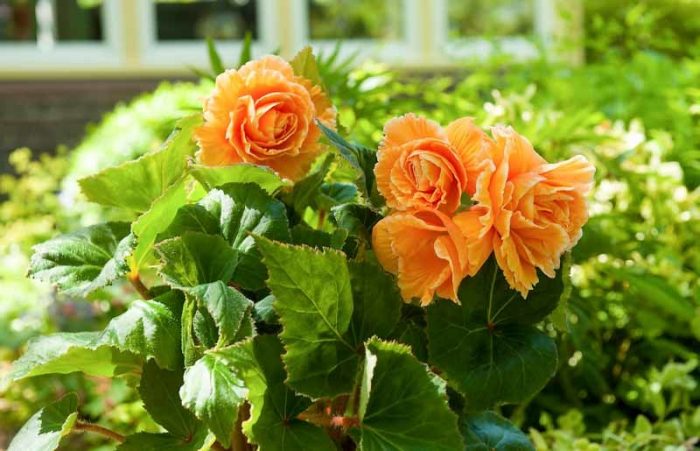
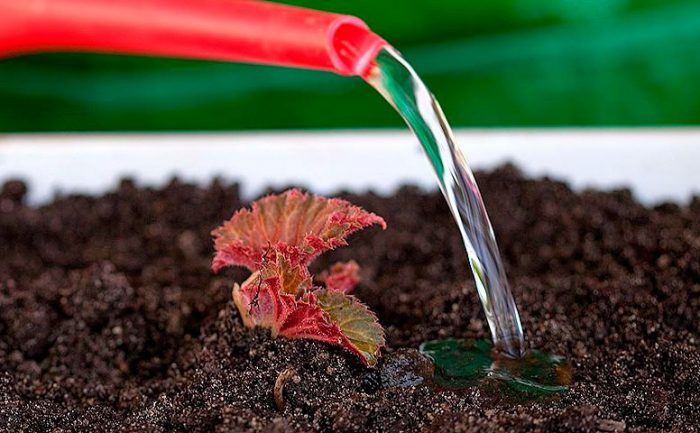
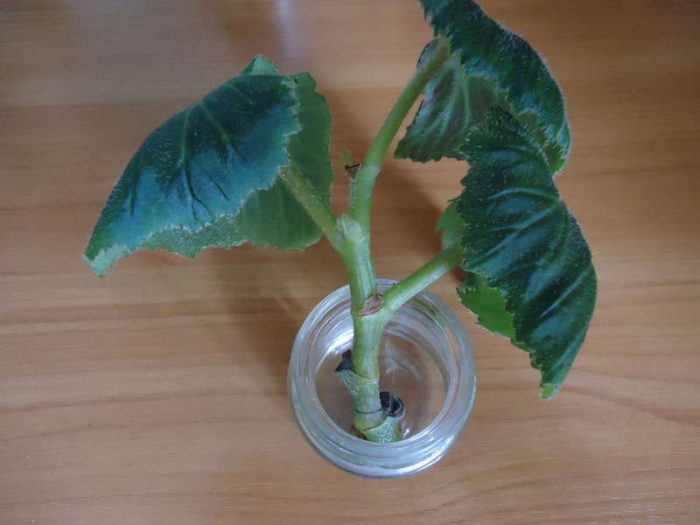
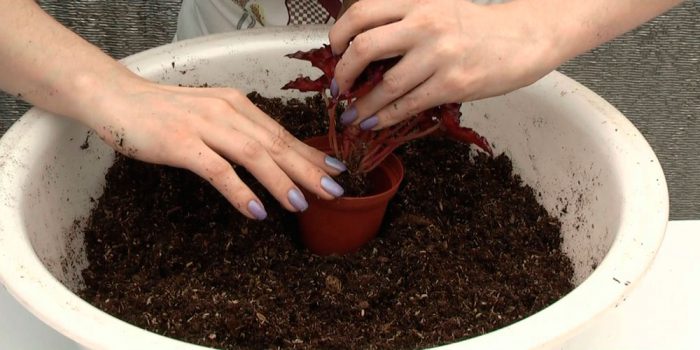
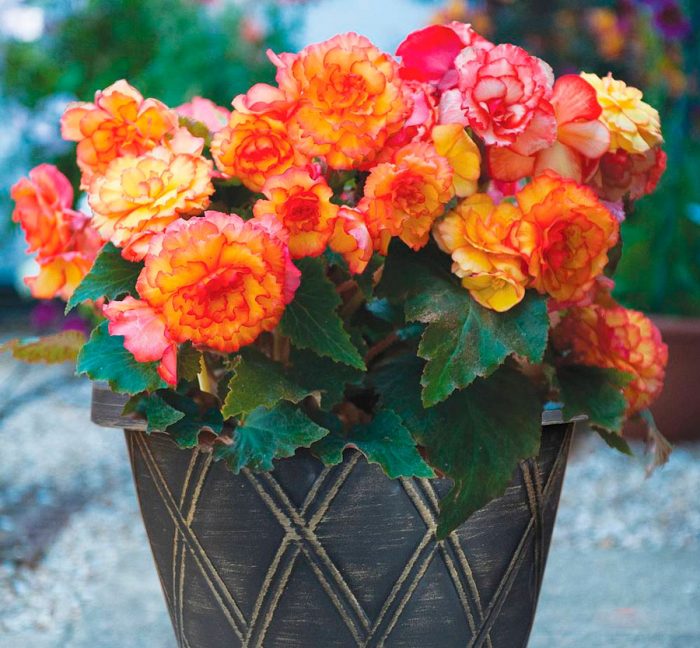
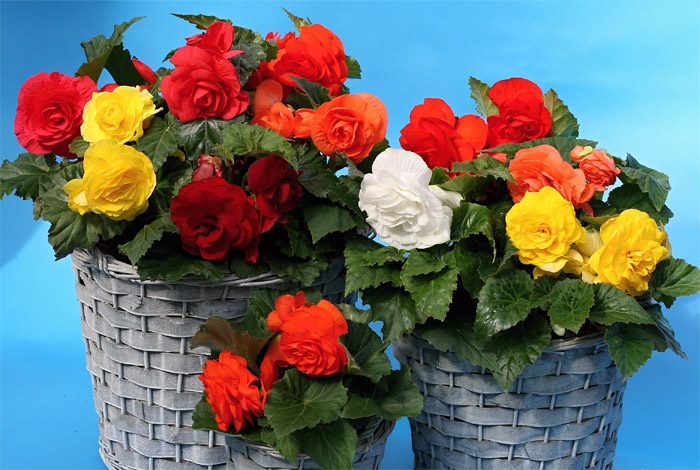



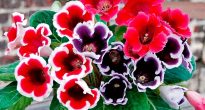

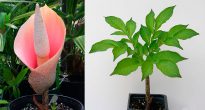




Excellent article, all to the point and specifically !!!
I planted a begonia tuber in the spring, there were two rather large stems, but I managed to break both stems with a crooked hand, what should I do, will the tuber now live and will it give new shoots?